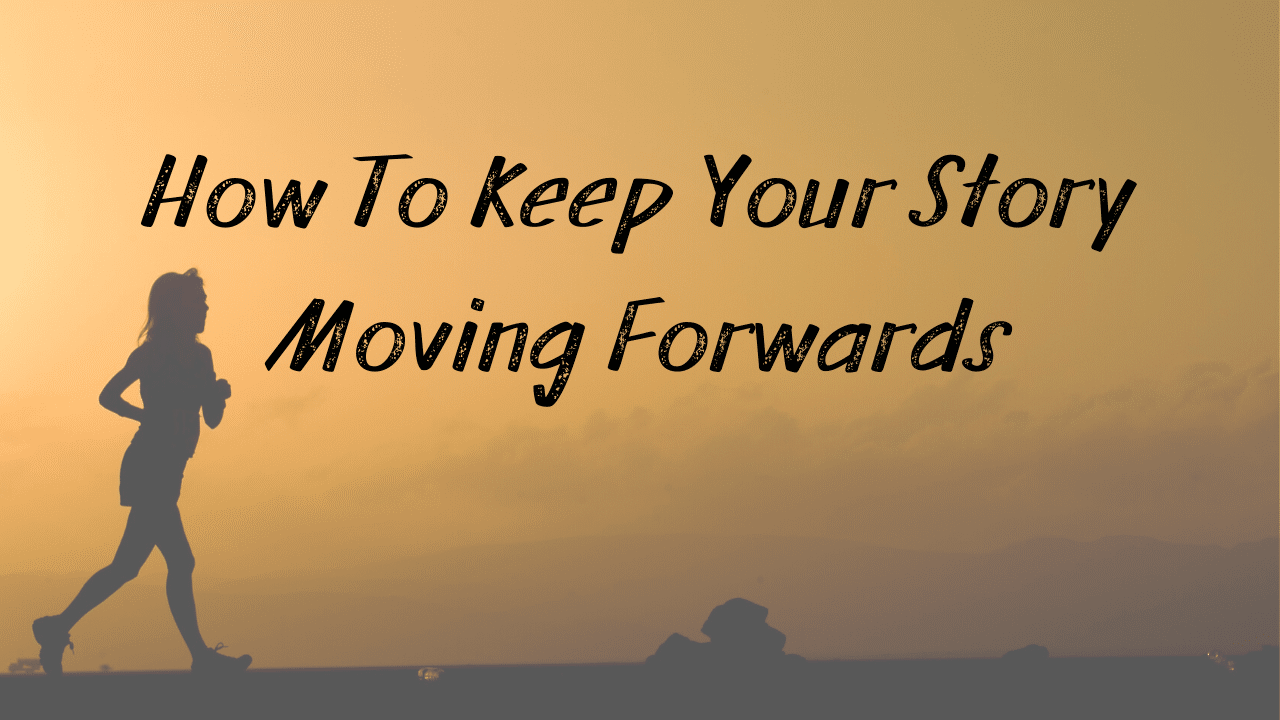As an Amazon Associate I earn from qualifying purchases.
Written by JJ Barnes
The rate at which you write your story moving forwards is referred to as the “pace” of your story. If your story has too slow a pace, it can be boring. If the pace is too fast then it’s unclear what’s happening and why.

You need to find a balance between your story moving forwards quickly, whilst still taking time to explain what is happening and why.
Conflict Keeps Your Story Moving Forwards
To keep your story moving forwards, you always need to have active conflict in every scene. By conflict I don’t mean people have to be fighting each other, nobody has the energy for constant fighting. Conflict in your scene means at no point do all your characters have what they want.
If your scene lacks conflict, if everybody has what they want, then the story won’t move forwards. If people have what they want, they won’t be in pursuit of anything, they won’t be driving the story towards the climax. Scenes without conflict have no pace, they’re stalled. The characters are just existing.
Pace Requires Conflict
Watching characters just exist isn’t an entertaining story. You’re joining these characters at this point in their lives specifically to observe their story. If their story isn’t happening, then point of reading or watching it isn’t happening either. The more conflict there is in a scene, the more characters there are in pursuit of goals, the more interesting the scene is.
To maintain the pace of your story, keep the conflicts active the whole way through your story. The conflict begins at the inciting incident, when your Protagonist goes in pursuit of their goals. It’s in every scene up to the climax, when the character’s goals are resolved.
Description

Description is what will slow the pace of your story down. If you don’t describe anything in your scene then nobody will understand where they are or who they are. If you describe so much your pace starts to crawl, your audience will get bored.
When you’re focusing on description you’re less likely to be focusing on the active conflict. And, without conflict, your story slows down. So when using descriptions in your story, be considered with it. Make sure you use more poetic and lengthy descriptions at points where the tension isn’t too heightened. Lengthy descriptions will sap the tension you’ve built and ruin the scene.
Root Descriptions In Protagonist POV To Keep Your Story Moving Forwards

By focusing descriptions on the character you’re most interested in during the scene, you can still keep the conflict active. If your POV character, usually the Protagonist, is personally effected by something or somebody in the scene, then they would naturally have thoughts about what they look like or what they’re doing in their heads. Follow those thoughts, consider how and why those things are impacting the Protagonist, and focus descriptions on those factors.
During a big fight scene, a point of high tension, your POV character would spend less time thinking about what people look like and what colour the walls are. They’ll be focussed on fighting and surviving. If your descriptions mirror that you’ll have a faster pace because your scene will focus more on the conflict.
During a romantic picnic in the park, your POV character would spend more time observing the beauty of their environment. They’ll see the light on the water, smell of cut grass in the air. Their thoughts will go to the way the person they’re with looks at them, the way a smile plays on their lips. A slower pace will suit that scene more.
Finding The Balance

Even a slower, more ponderous scene, needs conflict. It could be internal conflict. Your character isn’t sure what they want or is too nervous to say something they want to say.
They could have a secret or be hopeful for something to happen. For instance, they could want a proposal and be too scared to mention it. They could be feeling disappointed when it doesn’t happen and struggling with their emotions.
A faster scene will still need descriptions. If you’re describing how a character is fighting another, you need to tell your audience they were kicked in the guts, or thrown into a wall. They need to be able to visualise that fight happening. You need to describe how much pain they’re in or how scared they are, or you’ll lose the humanity.
Keep your audience connected to the character’s feelings, both in fast and slow pace scenes. It keeps your audience rooted in the importance of the story. The stakes won’t matter if your characters don’t matter. Your characters won’t matter if your audience hasn’t emotionally connected to them.
More From JJ Barnes:
I am an author, filmmaker, artist and youtuber, and I am the creator and editor of The Table Read.
You can find links to all my work and social media on my website: www.jjbarnes.co.uk
Buy my books: www.sirenstories.co.uk/books
Follow me on Twitter: @JudieannRose
Amazon and the Amazon logo are trademarks of Amazon.com, Inc, or its affiliates.



[…] explores how the relationship can change as your story moves forward, and how to develop their […]
[…] of expressing. There’s nothing bland about Offred. Her focus and drive and intelligence pushes the story forwards, and her pain and despair makes it a painful read. But that pain and intensity makes the story […]